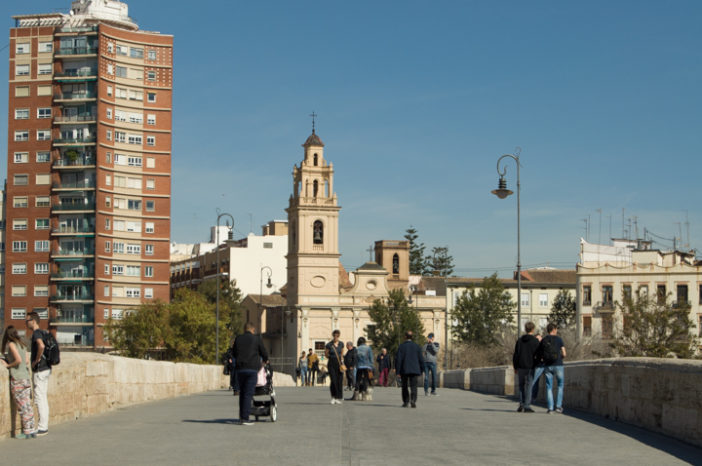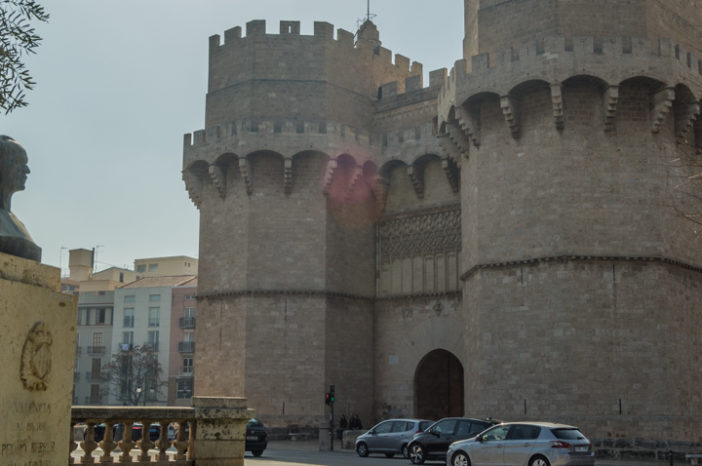Serranos Bridge
The companions of King James I who came to conquer Valencia from the mountainous region of Teruel settled in this area of the city, giving name to this bridge, as well as to the gate of the wall and the back street. It is the oldest of the existing bridges over the River Turia and its current appearance comes from 1518, when the “Old Factory of Walls and Valleys” arranged for the rebuilding of the existing one that had been washed away by the waters of the Turia the previous year and had previously replaced the Arab bridge of the A-Qantara. Built in stone, under the direction of “pedrapiquer” Juan Bautista Corbera, it has a stepped ramp to access the bed, now the Turia Garden, and is formed by nine segmental arches with breakwater, cutters and walls. From 2005 to 2009 it was restored under the direction of architect Ignacio Bosch.
It is not necessary to understand the structure and layout of the so-called "historic bridges" without establishing their essential link with the layout and structure of the city. The bridges crossed the bed of the Guadalaviar and articulated the relations between the northern territories and the main internal communication routes: the Serranos bridge with the old road to Sagunto and Maestrazgo. It was the second of the so-called "historic bridges" to be rebuilt in stone in 1518.
Known in Muslim times as A-Qantara, that is to say "the Bridge", this name used to be attributed to stable bridges usually of stone and of Roman origin, but there is no record of these characteristics in this bridge at that time.
In 1349, coinciding with a period of strong consolidation and urban characterization, the General Council ordered that the bridge be built in stone to better resist the avenues of the Turia.
The floods of 1406 and 1427, but especially that of 1517, inflicted serious damage on the bridge, so a year later, the Old Factory of Murs i Valls arranged on June 22, 1518 to rebuild it as it is today.
It came to have before the s. XVIII up to five statues, those of San Pedro Nolasco, San Pedro Pascual, Fray Gilaberto Jofré, Queen Teresa Gil de Vidaure and Na Señora de la Merced, but before the arrival of the Napoleonic troops, the statues with their houses and the side parapets were destroyed and thrown into the river as part of the defense works of the city. One of Marshal Suchet's first orders for the city government was directed to the New River Factory to recompose the bridge's parapets without delay.
The bridge, with 9 segmental arches, is 159.7 meters long and 11.2 meters wide board.


Dades bàsiques
Serranos Bridge